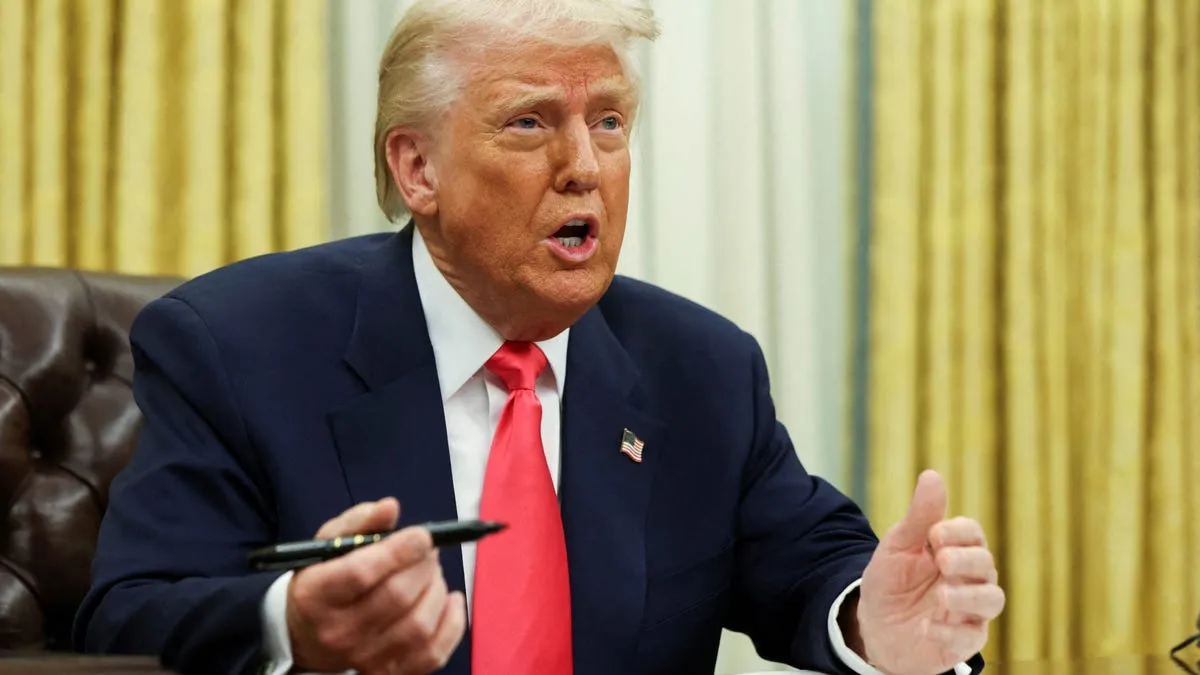
In a bold move reflecting his long-standing campaign promise, President Donald Trump is preparing to sign an executive order aimed at dismantling the U.S. Department of Education. This anticipated action underscores Trump's commitment to returning education authority to the states, a significant shift in federal education policy.
Scheduled for a signing ceremony at the White House, the executive order has been in development for several weeks. Attendees will include prominent Republican governors and state education commissioners. According to a summary reviewed by USA TODAY, Trump will instruct his education secretary, Linda McMahon, to take all necessary steps to facilitate the closure of the Department of Education, while ensuring uninterrupted delivery of essential services and programs that millions of Americans rely on.
While the executive order is poised to face legal challenges, it signals a new chapter in the discussion around presidential authority over federal agencies. Recently, a federal district judge in Maryland blocked the administration's efforts to shutter the U.S. Agency for International Development, raising questions about the potential for similar outcomes regarding the Department of Education.
The Department of Education, established as a Cabinet-level agency in 1979, will not be immediately dissolved following Trump's signature. Eliminating the agency entirely would require legislative action from Congress. Despite recent reductions in the department's workforce, which have decreased from over 4,100 employees to approximately 2,200, the agency continues to manage critical federal funding programs for schools.
Harrison Fields, principal deputy press secretary, stated that the executive order aims to empower parents, states, and communities to take control of educational outcomes. Fields highlighted a national crisis, citing recent test scores from the National Assessment of Educational Progress that indicate children in the U.S. are falling behind their peers globally.
The executive order outlines a plan to maintain current federal funding for students with disabilities under the Individuals with Disabilities Education Act, as well as Title I funding for low-income schools and federal student loan payments. However, it stipulates that any educational programs receiving funds from the Department of Education will be prohibited from promoting diversity, equity, and inclusion initiatives or gender ideology.
This directive aligns with the longstanding Republican belief that the federal government wields excessive influence over local education policies, despite the federal government traditionally having limited control over school curricula. Trump has articulated a desire for McMahon to ultimately make her position unnecessary as the administration seeks to reduce federal oversight.
In the past week, more than 1,300 employees from the Department of Education received termination notices as part of a broader strategy to streamline the federal workforce. This reduction coincides with criticism from Trump regarding the performance of U.S. public schools, where he has pointed out a concerning correlation between high spending per pupil and poor academic outcomes.
Trump's administration has cited data from the Department of Education to bolster claims that the U.S. has not made significant educational advancements despite spending over $1 trillion in federal education dollars over 46 years. The executive order highlights a troubling decline in math and reading scores among 13-year-olds, emphasizing that low-performing students have fallen further behind.
Trump's executive order poses a significant challenge to the current education landscape, as it aims to give states full control over educational oversight. While local school districts already dictate curricula, the federal government provides limited oversight for schools receiving federal funding. The administration's focus on education reforms has been met with skepticism from both Democrats and some Republicans, especially concerning the potential impacts on appropriated funding for schools.
As Trump continues to advocate for a radical overhaul of the federal education system, the implications of his executive order remain to be seen. With ongoing waves of employee layoffs and policy shifts affecting students and schools, the path forward for the Department of Education and education in America is fraught with uncertainty.
For more updates on this developing story and its implications for U.S. education policy, stay tuned.